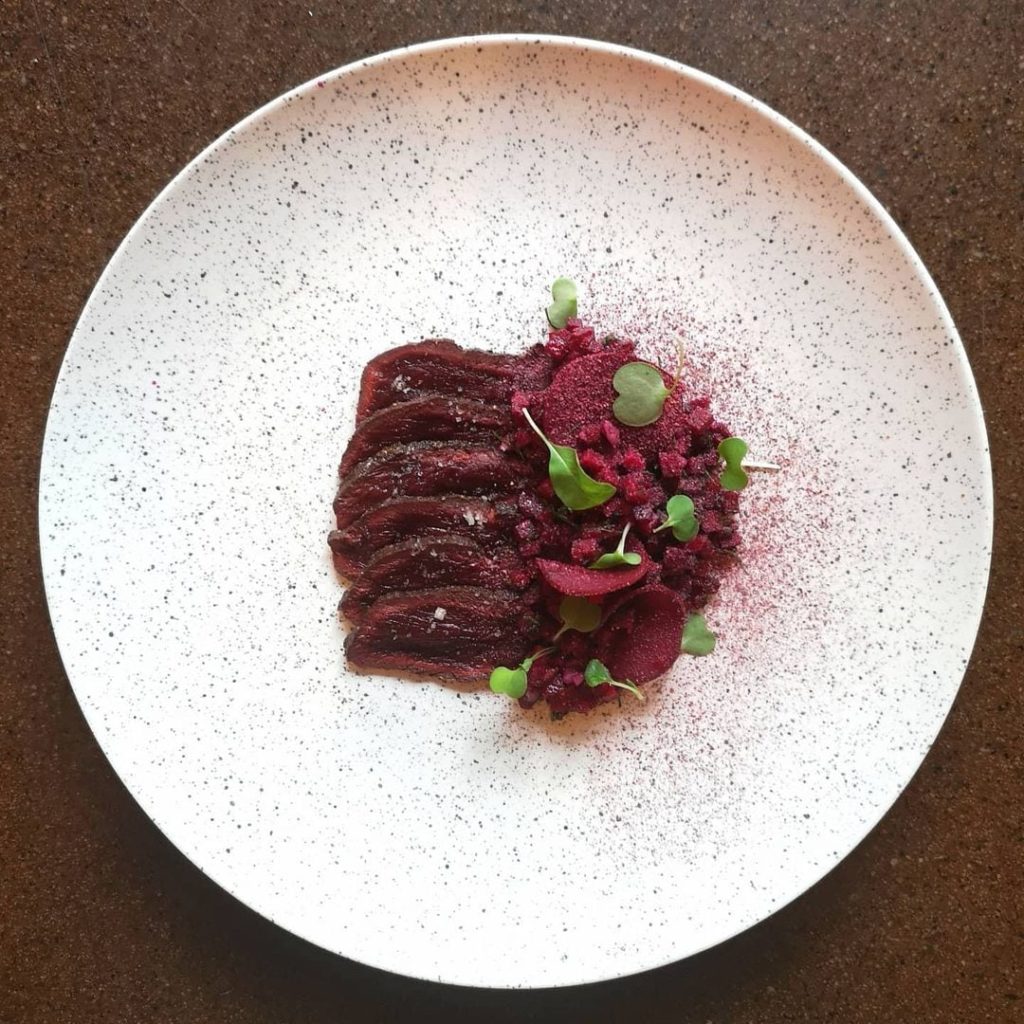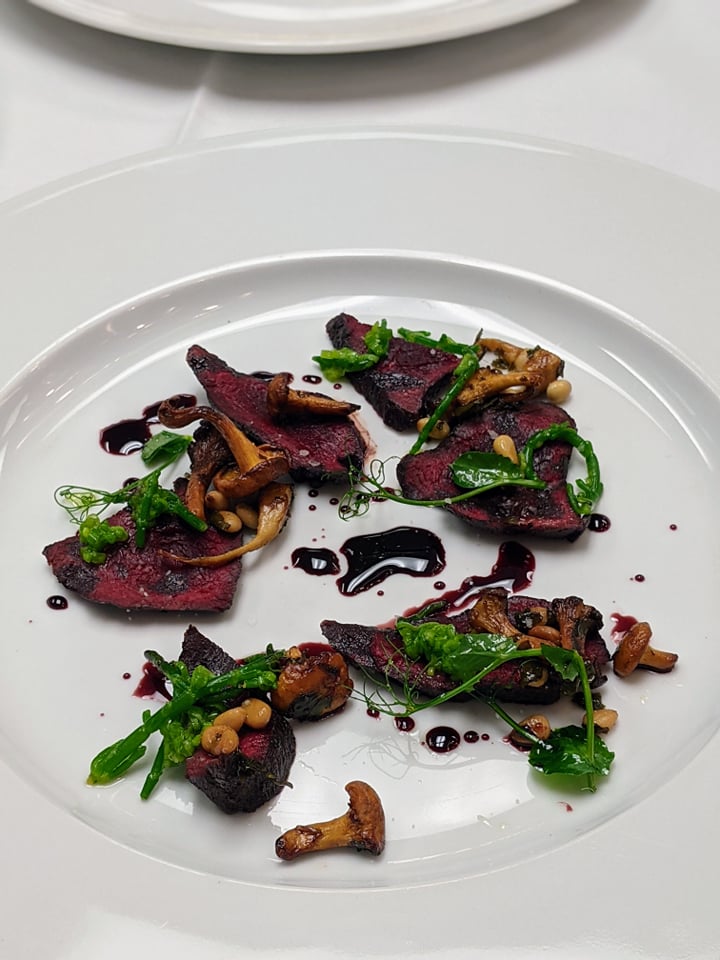Seal meat is an excellent source of animal protein, plus it’s low in cholesterol and fat, and high in iron, zinc and magnesium. However, as a wild food harvested in remote areas, it is nowhere near as familiar to most consumers as farmed meats like beef, pork or chicken.
So what are most of us missing? You may be surprised to learn that seal cuisine, when done right, can hold its own against anything the finest restaurants have to offer.
Seal Meat Cuts
Seal loin: The back muscle, or loin, is the most succulent cut of seal meat, and a favourite of chefs and diners alike. There are two types: adult loin and veal loin.
Adult loin is extremely rich in iron, making it very dark red. Veal loin, named after the better-known meat of calves, comes from young seals, and is more pinkish in hue. The texture is similar to a tuna steak or fine filet mignon. And like these other cuts, seal loin has almost no fat to render, making it suited to minimal cooking.
Flippers: These are excellent braised, in stews or pies, or as jerky, pulled meat, charcuterie, or confit. Flipper pies are a traditional dish in Newfoundland and Labrador. Unlike loin, flippers are best given a long, slow cook, leaving the meat moist and so tender it falls off the bone. Any beef dish that is cooked slowly works with seal flipper too.
Flanks: These are served whole as ribs, or processed and cured to make charcuterie.
Trimmings: These are used in many ways. Ground or chopped meat makes great burgers, stews, soups, sausages, salami, charcuterie, sandwich meats and more. Long, slow cooking enhances the flavour and makes everything tender.

So How Does It Taste?
With the several cuts and almost infinite preparations available, how a seal dish tastes is limited only by a cook’s imagination and skill. For example, pappardelle with a blend of minced seal and pork is hard to compare with grilled seal merguez sausages. But a raw or rare dish, uncomplicated by sauce, herbs, spices or garnishes, showcases the essential taste of seal meat – and it can surprise first-timers.
One such favourite is slices of seared loin, served rare or medium-rare at most. Turn up the heat, sear your loin for a minute or two per side, then let it rest for a few minutes to ensure it is moist and tender. Slice it, maybe sprinkle on a little black pepper, and dig in!
If you’ve not tried this before, you may be expecting your seal to taste like fish. After all, seals eat nothing else! But there’s no fishy taste at all, and it’s really not that strange. Beef cattle fed only on grass don’t actually taste of grass. In fact, seared seal loin tastes much like beef, and, when properly prepared, has been likened to a beef filet mignon. Adult loin has a stronger flavour than veal loin, described by some diners as “gamey”, like deer or moose, with a slight iodine taste.
Don’t get complacent though, warns Eric Pateman, an award-winning chef and ambassador for Canadian cuisine. “The big thing with seal is if you don’t cook it right, it does taste like liver and it does taste bad. It is very temperamental,” he said, after adding seared loin to his menu for the Dine Out Vancouver Festival in 2017.
As for other preparations Pateman had not yet tried, his choice of terms may not have everyone nodding in agreement, but his point is well made that there are many ways to cook seal. “I will be interested,” he said, “when I am traveling across the Arctic circle to Newfoundland and going to the Festival of the Seal in the Magdalen Islands … to try other people’s interpretations of it. … [T]he much more historical preparations are to cook it to death, and it comes across as a much more intense flavour, versus what we have done with the loin itself, keeping it rare. It mutes a lot of the flavours that come out with excessive cooking.”

Seal Tartar by ITHQ’s students from Chef Benoit Lenglet
Buying Seal Meat
So are you ready to try your hand at cooking seal yourself? Then the first step, obviously, is to buy some. This is harder for most people than popping down to the store for a frozen chicken, but it can be done.
First, rest assured that all seal meat sold commercially in Canada is thoroughly regulated and deemed safe by the Canadian Food Inspection Agency. Controls govern every stage of production from the harvest to final packaging. These assure consumers of the meat’s nutritional quality, and also that levels of oceanic pollutants – as can exist in any seafood – are acceptable. Several provinces, including Newfoundland and Labrador and Quebec, also have their own regulations for seal products that are processed and sold within the same province.
If you’re lucky enough to live near a coastal community where seals are harvested, buying seal meat is easy, though availability will vary depending on the success of the last hunt.
Elsewhere in Canada, you’ll need to know where you’re going before setting off, shopping bag in hand. Market development has long been hindered by a curious inconsistency in regulations. All of Canada except for the province of Quebec treats seals as fish when it comes to approving food for human consumption. But Quebec, which also happens to be Canada’s second largest province by population, classifies seal as meat, like beef, pork and chicken. Still, stores offering frozen or smoked seal meat, or prepared foods like pies, pâté or sausage, are slowly increasing.

Picture by Dominique Lebel – Products from Boucherie Côte à Côte
Many top restaurants in major cities across Canada also feature seal on their menus, when it’s available. So a kind manager may point you toward their supplier – after you’ve dined there, of course!
Or you can start by doing what everyone is doing these days, and go online! CanadianSealProducts.com removes all the guesswork by providing lists not only of grocery stores selling seal meat, but also restaurants and distributors. You can even do your shopping online, and when your order arrives, check out some of the mouth-watering recipes.
So the next time you have dinner guests over, think about foregoing standards like roast chicken or barbequed steaks. Instead, wow your friends with something they’ve never even heard of, like seal gnocchi poutine, or seal steak with mustard and apple cream!

Gnocchi Poutine from Bar à Vin Liège in Repentigny, QC
Sources:
- https://www.masterclass.com/articles/cooking-101-what-exactly-is-confit-learn-how-to-confit#what-is-confit
- https://en.wikipedia.org/wiki/Merguez
- https://blog.truthaboutfur.com/eating-seal-meat-vancouver-chef-puts-seal-on-menu/
- https://www.dineoutvancouver.com/
- https://inspection.canada.ca/eng/1297964599443/1297965645317



